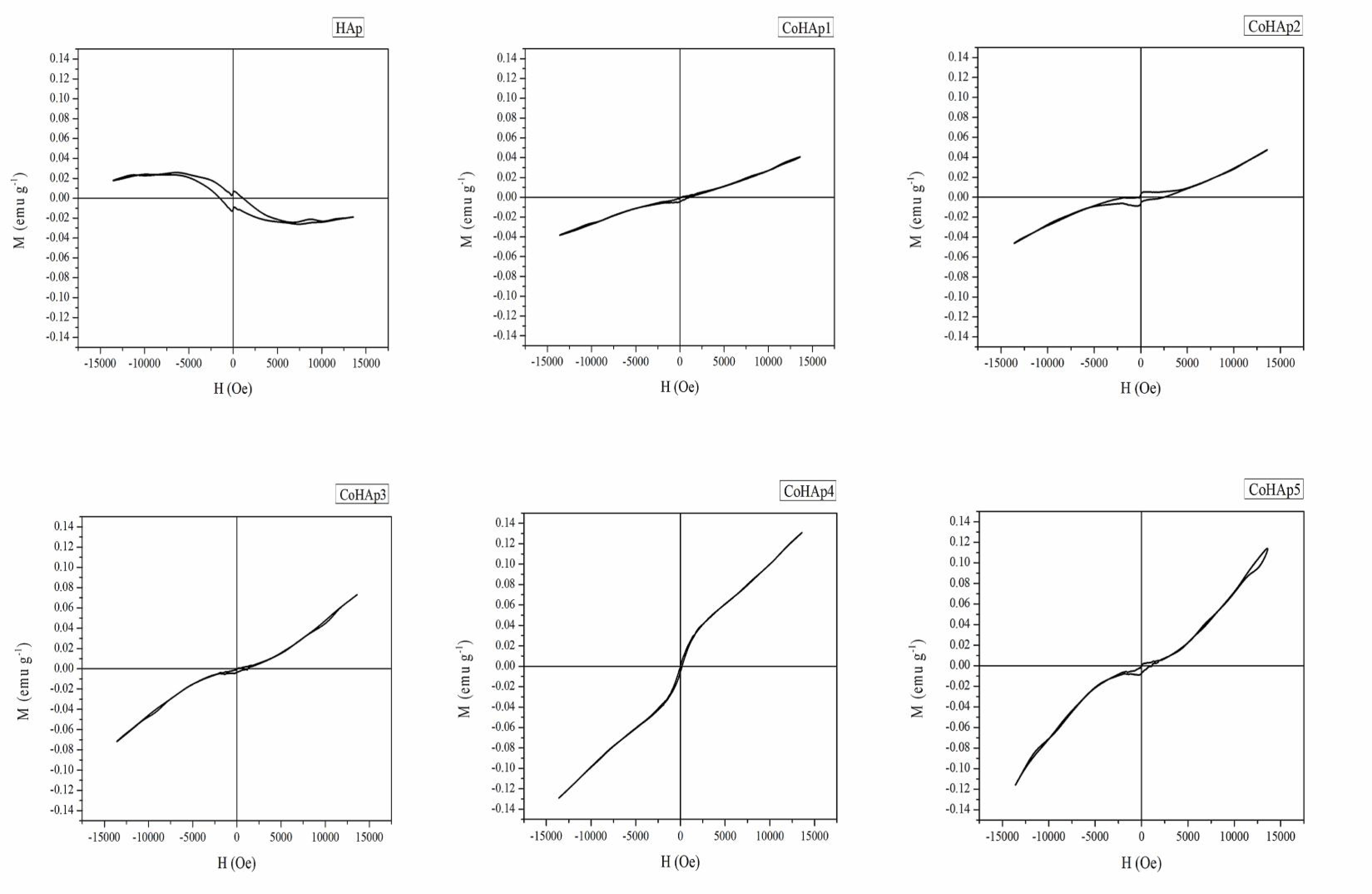Sun, Jan 19, 2025
[Archive]
Volume 16, Issue 1 (March 2019)
IJMSE 2019, 16(1): 39-48 |
Back to browse issues page
Download citation:
BibTeX | RIS | EndNote | Medlars | ProCite | Reference Manager | RefWorks
Send citation to:



BibTeX | RIS | EndNote | Medlars | ProCite | Reference Manager | RefWorks
Send citation to:
Yazdani N, Javadpour J, Eftekhari Yekta B, Hamrang M. Hydrothermal Synthesis of Cobalt- Doped Hydroxyapatite Nanoparticles: Structure, Magnetic Behaviour, Bioactivity and Antibacterial Activity. IJMSE 2019; 16 (1) :39-48
URL: http://ijmse.iust.ac.ir/article-1-1067-en.html
URL: http://ijmse.iust.ac.ir/article-1-1067-en.html
Abstract: (20785 Views)
This study focuses on the physical, magnetic, biological and antibacterial behaviour of cobalt-doped HAp powder samples. Pure and Cobalt- doped HAp nanoparticles were synthesized by hydrothermal method. Calcium nitrate, di- ammonium hydrogen phosphate and cobalt nitrate were used as precursor materials. The synthesized powders were characterized using x-ray diffraction pattern (XRD), fourier transform infrared spectroscopy (FTIR), field emission scanning electron microscopy (FESEM), vibrating sample magnetometer (VSM), Raman spectroscopy as well as MTT assay and cell adhesion test. Disc diffusion method was used to investigate antibacterial activity of the samples. The results confirmed the substitution of Ca by Co ions in the HAp lattice. In addition, this substitution induced size reduction and morphology change in HAp particles. All cobalt substituted HAp powder samples displayed paramagnetic properties, as opposed to the diamagnetic behaviour observed in the pure HAp samples. In addition, these nanoparticles exhibited cell adhesion, biocompatibility and antibacterial activity against S.aureus bacteria.
This study focuses on the physical, magnetic, biological and antibacterial behaviour of cobalt-doped HAp powder samples. Pure and Cobalt- doped HAp nanoparticles were synthesized by hydrothermal method. Calcium nitrate, di- ammonium hydrogen phosphate and cobalt nitrate were used as precursor materials. The synthesized powders were characterized using x-ray diffraction pattern (XRD), fourier transform infrared spectroscopy (FTIR), field emission scanning electron microscopy (FESEM), vibrating sample magnetometer (VSM), Raman spectroscopy as well as MTT assay and cell adhesion test. Disc diffusion method was used to investigate antibacterial activity of the samples. The results confirmed the substitution of Ca by Co ions in the HAp lattice. In addition, this substitution induced size reduction and morphology change in HAp particles. All cobalt substituted HAp powder samples displayed paramagnetic properties, as opposed to the diamagnetic behaviour observed in the pure HAp samples. In addition, these nanoparticles exhibited cell adhesion, biocompatibility and antibacterial activity against S.aureus bacteria.
This study focuses on the physical, magnetic, biological and antibacterial behaviour of cobalt-doped HAp powder samples. Pure and Cobalt- doped HAp nanoparticles were synthesized by hydrothermal method. Calcium nitrate, di- ammonium hydrogen phosphate and cobalt nitrate were used as precursor materials. The synthesized powders were characterized using x-ray diffraction pattern (XRD), fourier transform infrared spectroscopy (FTIR), field emission scanning electron microscopy (FESEM), vibrating sample magnetometer (VSM), Raman spectroscopy as well as MTT assay and cell adhesion test. Disc diffusion method was used to investigate antibacterial activity of the samples. The results confirmed the substitution of Ca by Co ions in the HAp lattice. In addition, this substitution induced size reduction and morphology change in HAp particles. All cobalt substituted HAp powder samples displayed paramagnetic properties, as opposed to the diamagnetic behaviour observed in the pure HAp samples. In addition, these nanoparticles exhibited cell adhesion, biocompatibility and antibacterial activity against S.aureus bacteria.
Keywords: Hydroxyapatite, Cobalt- hydroxyapatite, hydrothermal, paramagnetic, antibacterial activity
Type of Study: Research Paper |
Subject:
Ceramics
Send email to the article author
| Rights and permissions | |
 |
This work is licensed under a Creative Commons Attribution-NonCommercial 4.0 International License. |







